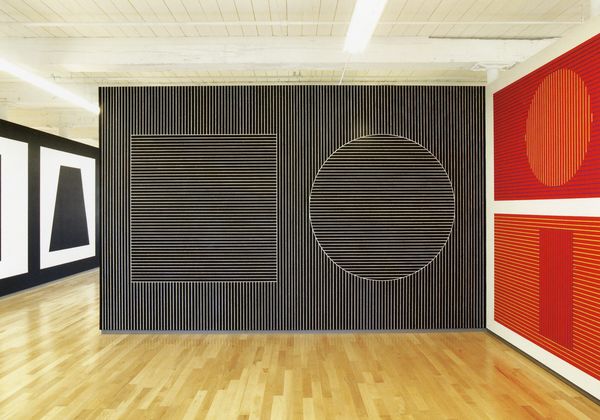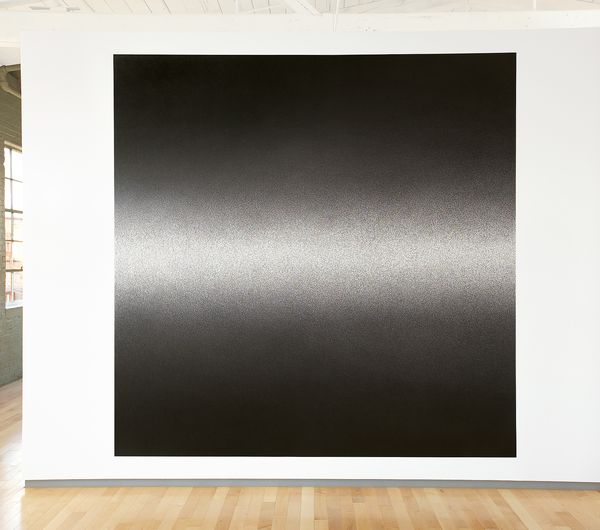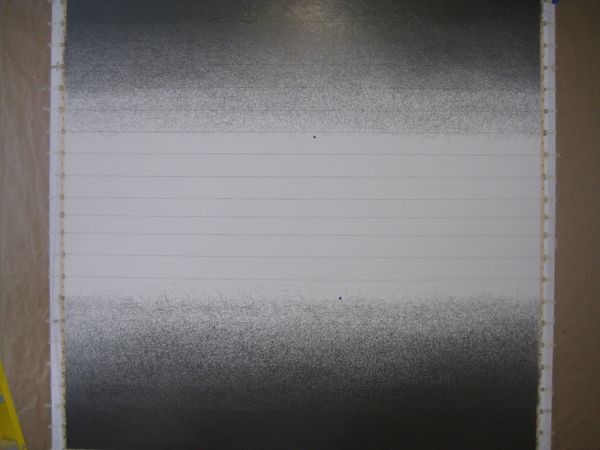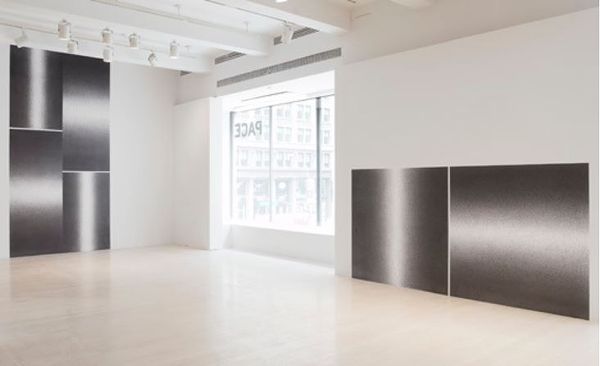Sol LeWitt Wall Drawing #1185 Scribbles: Inverted Curve (Horizontal) installed at Sol LeWitt. A Wall Drawing Retrospective at Massachusetts Museum of Contemporary Art. The comprehensive retrospective opened in 2008 and celebrates LeWitt's prolific output of Wall Drawings; the artist created over 1260 Wall Drawing works and proposals during his lifetime. The exhibition will be on view until 2033.
The ideas need not be complex. Most ideas that are successful are ludicrously simple. Successful ideas generally have the appearance of simplicity because they seem inevitable.
— Sol LeWitt
Wall Drawing 1185: Scribbles: Inverted curve (horizontal), October 2005 is included in MASS MoCA's on-going exhibition Sol LeWitt: A Drawing Retrospective, which opened on 16 November 2008 and will remain on view for 25 years. The 105 wall drawings included in the exhibition cover nearly an acre of space in the historic mill building that was renovated for the specific purpose of housing the exhibition. A hallmark of LeWitt's wall drawings, the title of Wall Drawing 1185: Scribbles: Inverted curve (horizontal) describes its appearance, and while the description is reductive and straightforward, the work is a stunning and powerful tour de force.
LeWitt commenced his Wall Drawings in 1968, the year following the publication of his seminal work Paragraphs on Conceptual Art. This collection of writings explored the notion of applying media directly onto the wall, a shift from traditional techniques of drawing onto paper or applying paint to canvas. This progressive shift from paper to wall allowed the artist to fully achieve the flat and two-dimensional quality which would become exemplary of his practice.
Wall Drawing #1185 Scribbles: Inverted Curve (Horizontal) in process of installation at the artist's 2005 MASS MoCA’s retrospective.
In his magnum opus, LeWitt also radically questioned the idea of authorship; the artist identified the dynamics between the conception of an idea and execution, suggesting that the essential planning of an artwork should make the execution of the piece 'a perfunctory affair. The idea becomes a machine that makes the art'—as the artist said in Artforum, 1967. Working on his Wall Drawings in a variety of mediums and site-specific locations over a forty year period, LeWitt's Wall Drawings have become a pivotal cornerstone of his practice, continuing to internationally inspire with his geometric marriage of color and form.
In conceptual art, the idea or the concept is the most important aspect of the work. When an artist uses a conceptual form of art, it means that all of the planning and decisions are made beforehand and the execution is a perfunctory affair. The idea becomes a machine that makes the art.
— Sol LeWitt
In September 2007, PaceWildenstein opened Sol LeWitt: Scribble Wall Drawings in New York, unveiling eight new black and white graphite wall drawings. Opening five months after the artist's death, the exhibition marked the last show conceived by the artist and became LeWitt's tenth exhibition with the gallery.

Installation shot from Massachusetts Museum of Contemporary Art, featuring Wall Drawing 335: On four black walls, white vertical parallel lines, and in the center of the walls, eight geometric figures (including cross, X) within which are white horizontal parallel lines. The vertical lines do not enter the figures, 1980.
LeWitt's Wall Drawings can be found in seminal institutions such as Tate, London, Turner Contemporary, Margate, and Dia: Beacon.


